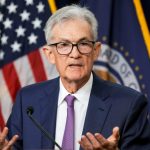Federal Student Loans This Fall Will Have the Highest Interest Rate in More Than a Decade
In the midst of ongoing economic challenges, one area of concern for students and families alike is the rising interest rates on federal student loans. This fall, students who are planning to take out loans to finance their education will be facing the highest interest rates seen in over a decade. This development has far-reaching implications for both current and future students, as well as the overall landscape of higher education financing in the United States.
The increase in interest rates on federal student loans comes at a time when the cost of higher education is already reaching unprecedented levels. With tuition fees on the rise and many students struggling to cover basic living expenses, the prospect of high-interest rate loans adds an additional burden to an already stressful situation. As a result, many students may find themselves having to take on more debt or forego their education altogether.
For current students who are already carrying federal student loan debt, the higher interest rates will mean larger monthly payments and more overall debt in the long run. This can have a significant impact on their ability to save, invest, or make major financial decisions in the future. Additionally, the prospect of paying off student loans at higher interest rates can lead to increased financial stress and mental health issues among borrowers.
The impact of rising interest rates on federal student loans extends beyond individual borrowers to the wider economy. As more students are forced to take on higher levels of debt to finance their education, they may be less likely to contribute to economic growth through spending, saving, or investing. This can have ripple effects on industries that rely on consumer spending and investment, as well as on overall economic stability.
In response to the looming crisis of high-interest rate federal student loans, policymakers and education experts are calling for action to address the underlying issues that have led to this situation. Proposed solutions include increased federal funding for higher education, restructuring of student loan repayment plans, and greater oversight of the student loan industry. By taking proactive steps to address the root causes of rising student loan interest rates, policymakers can help alleviate the financial burden on students and ensure that higher education remains accessible to all.
In conclusion, the news of the highest interest rates on federal student loans in over a decade is a concerning development that has wide-ranging implications for students, families, and the economy as a whole. As the cost of higher education continues to rise, it is crucial that policymakers and stakeholders work together to find sustainable solutions that will make education more affordable and accessible for all. By addressing the underlying issues driving the increase in student loan interest rates, we can create a brighter future for students and ensure that education remains a pathway to success for generations to come.



